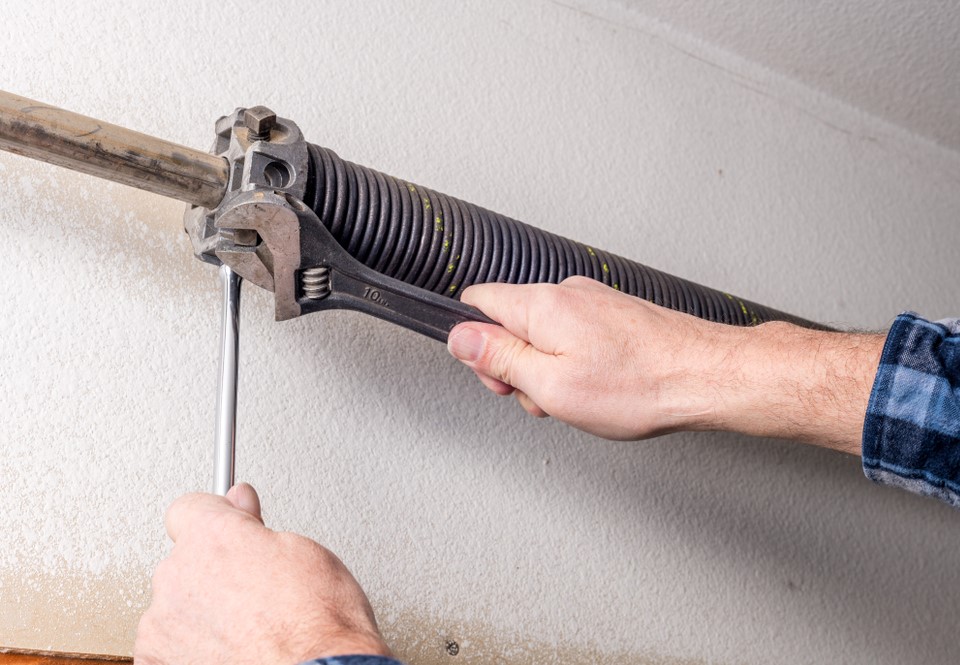
Takeaways
- Garage door spring failure can stop your door from working, and repairing or replacing springs at the right time protects safety and restores function.
- Watch for loud snaps, uneven movement, door that won’t stay up or closes too fast; those are signs springs need attention.
- Expect typical spring life to run about 7 to 12 years depending on usage and maintenance.
- Do not try DIY repair if springs are under tension; hire professionals for safe replacement and calibration.
- Budget and request a free quote ahead of time; cost depends on spring type (torsion or extension) and labor needed.
If your garage door “spring” breaks, you will know you have a problem!
Fixing a broken garage door spring can be dangerous because the spring is under a lot of tension. It’s generally recommended to hire a professional to repair or replace the spring, as improper handling can cause injury or further damage to the door or the system. It is well known across our industry that garage door spring repair is the job that the most professional technicians are injured on in our line of work! Each year, there are fatalities of professionals and DIY people handling this repair!
The point is that we strongly urge you to leave this to the professionals. This is not an area worth the risk and exposure, in our opinion. Not to mention, there are many tools needed that you are unlikely to have just sitting around.
How a Broken Garage Door Spring Is Best Fixed by the Experts?
Here are a few things we do when we show up for this repair:
1. Identify the Type of Spring
- There are two main types of springs: torsion springs and extension springs.
- Torsion springs are mounted above the door, usually on a metal shaft.
- Extension springs are located on either side of the door and are stretched when the door is closed.
- Make sure to get the correct replacement spring based on the type, size, and weight of your door.
2. Relieve Tension on the Old Spring
- Torsion Springs: If your spring is a torsion spring, use a winding bar to slowly unwind the spring. Start unwinding from the side that still has tension. The springs are under a lot of pressure, so be careful. Use a bar, and never use your hands to adjust the spring.
- Extension Springs: If it’s an extension spring, you must detach it from its pulley system. You may need to loosen the hardware and release the spring tension gradually.
3. We Remove the Broken Spring
- For torsion springs, we use a wrench or socket to remove the set screws and bolts that hold the spring in place.
- For extension springs, we unhook the spring from the pulley and track system.
4. Install the New Spring
- For torsion springs, slide the new spring into the shaft or mounting bracket and secure it with bolts.
- For extension springs, reattach the spring to the pulley system, ensuring it is correctly aligned with the track.
5. Wind the Torsion Spring
- For torsion springs, we will need to wind the spring to the correct tension. Use winding bars and wind the spring in the direction specified by the manufacturer. This is another thing people get wrong and cause a bunch of problems!
- Next, we have to be responsible for winding both sides evenly (if you have two torsion springs).
- Warning: This step can be hazardous because the spring is under extreme tension. That’s why it is best to call a professional.
6. Test the Door
- After replacing the spring, we run several tests on the door. There are a host of things to look for that will expose problems or certify that the repair is done properly.
Trust the Experts for Safe and Reliable Garage Door Spring Repairs

Let the experts at Mountain State jump in and handle a quick and professional installation for all of your garage door needs! Consider how many times you use your garage doors in a day or a week! You can count on our team to keep you “rollin” and maintain a secure and productive household!
- Garage Door Cracks: Causes, Repairs, and When to Replace - November 27, 2025
- Noisy Garage Door? Diagnosis, Fixes, and When to Call a Pro - November 26, 2025
- How to Repair Garage Door Dents: Fixes vs. When to Call a Pro - August 22, 2025
